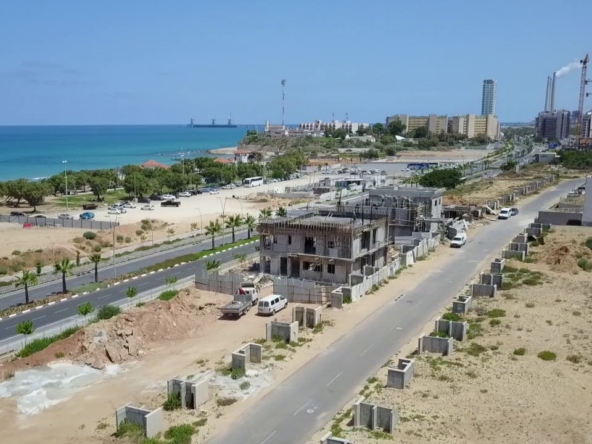In Israel, about 10,000 tree removal licenses are issued each year, and thousands of opinions are expressed on the effects of the planned construction on the trees in the area of the plan. The Ministry of Agriculture clearly states that the new procedure does not reduce the level of protection for trees, and that forestry officials will remain the guardians of tree protection and will review each removal request.
The validity of the permit is extended by one year
In the current situation, the first request submitted by the contractor regarding tree felling is at the stage of submitting the building permit application. This is a complex process, which includes a phase for discussing public objections, and waiting for the approval of the forestry official leads to delays that can sometimes reach months or years. In cases where valuable trees are found in the area, the contractor may be required to make changes to the plan.
As part of the reform of the Ministry of Agriculture, the opinion of the regional forestry official will be given as early as the planning phase, through a computerized system of available licenses. In other words, before the developer has submitted a detailed plan, they will be able to obtain information about the trees on the lot, their level of importance, which can be removed and which cannot. Consequently, the contractor’s need to submit a removal permit application in order to obtain a building permit is eliminated. The developer is granted a temporary reprogramming license at the planning information stage. This license will come into effect upon receipt of the building permit.
As part of the reform, it has also been decided to extend the validity of the relocation permit from two years, as has been customary until now, to three years, similar to the building permit. This will ensure that trees are not harvested in vain or earlier than expected.
“The stage at which the permit application is submitted is too late, in our opinion, and sometimes leads the contractor to make changes based on the trees,” said Inbar Ashkenazi, director of planning and information at the Department of Forests and Ilanot of the Ministry of Agriculture. “We want to be able to address this issue from the beginning of the information process, so that every contractor knows what can or cannot be planned on the ground, that is to say, if there is a tree that can be removed or must be preserved, the need to make changes.”
Strong pressure on the forestry official
The fact that, in some cases, contractors encounter the forestry official’s instructions at the last minute creates strong pressures to change the official’s decision. “The pressure on forestry officials exists and it is crazy and natural,” said Erez Barkai, national forestry officer at the Ministry of Agriculture. “The pressure comes from both sides, from the developers, but also from green organizations. We try to balance the needs of the developers and on the other side to maintain a green urban landscape.”
Ashkenazi and Barkai admit that the current policy of uprooting thousands of trees for construction purposes is wrong and causes damage to trees: “Israel is the country that has copied the most trees in the world, but 60% of the trees did not survive and the rest have not grown for 5-15 years. Over the past two years, the trend has been to reduce the number of unique tree copies,” said Barkai.
“Most cities do not have continuous tree shade, even though we are a very hot country,” said Ashkenazi, adding that “developers must pay a ransom for trees or plant new ones. Today, it is very difficult to create an area that allows tree roots to develop in an existing urban environment.”
For this reason, she says, in cases where mature trees exist in urban areas, such as in the case of urban renewal, they often insist on leaving them, even if it involves a change of plan. Furthermore, in recent months, the Ministry of Agriculture has collaborated with the planning administration to develop a guidance document for authorities on the policy regarding trees and shading. The document and professionals from the Ministry of Agriculture will be able to assist authorities in planning and implementing landscape development that allows for continuous shade in the city streets.


